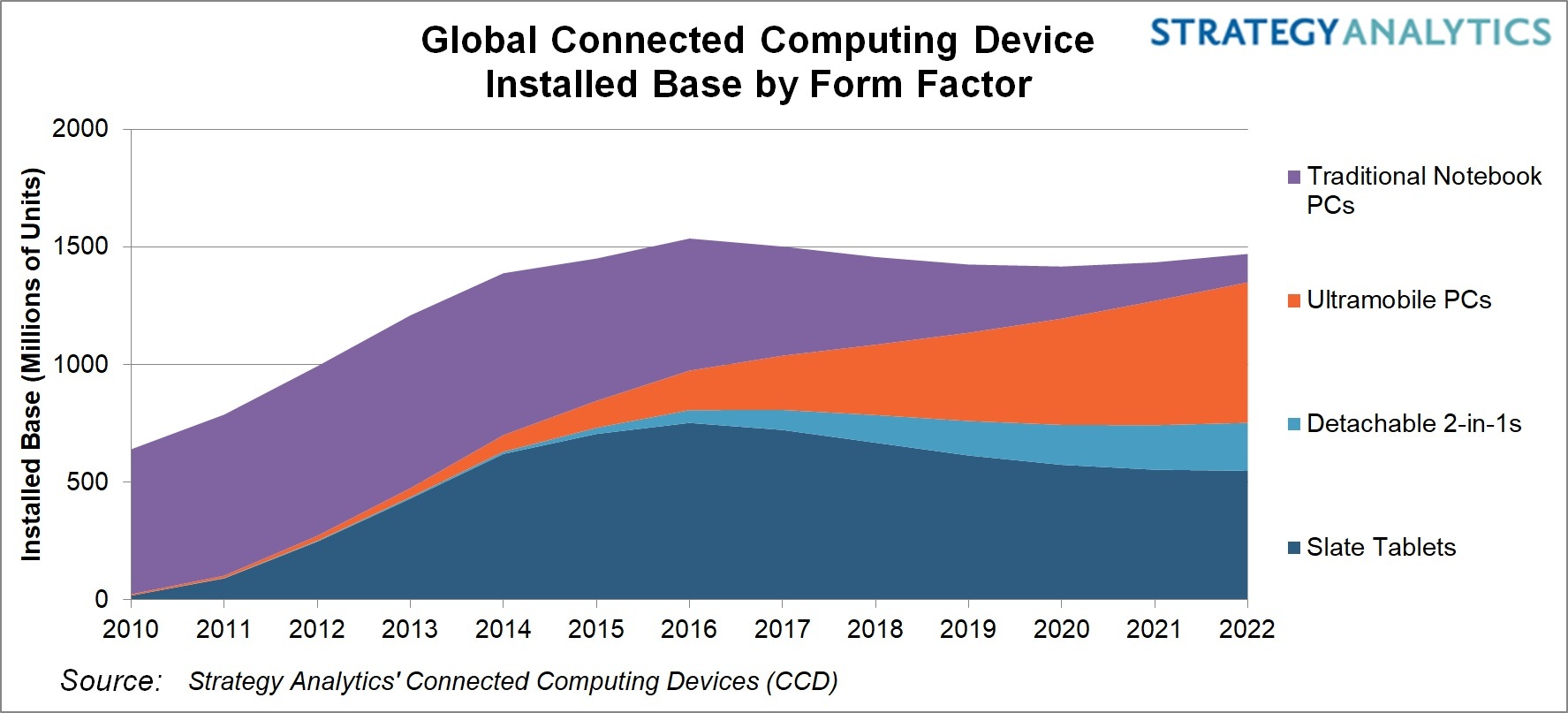Strategy Analytics: In the age of smartphones, laptop and tablet ownership strong at 1.5 billion units
16/08/2018 - Boston: (BUSINESS WIRE) The connected computing market – including all forms of laptops and tablets – is showing surprising resilience, according to Strategy Analytics’ latest research. Despite global shipments falling 4% year-over-year, the installed base is at a massive 1.5 billion units and household penetration is at 30%, which is the measure of how many households have at least one connected computing device. This rate is in the 60% to 70% range in many developed markets. The company projects that consumers are paring down the number of multiple computing devices they own, replacing their computing devices less regularly, holding on to them for much longer, and spending less when they finally do replace them, putting pressure on device vendor revenues.
The full report from Strategy Analytics’ Connected Computing Devices (CCD) service, Connected Computing Shipments, Revenue, Installed Base and Penetration Forecast by Country 2010-2022 , can be found here: https://www.strategyanalytics.com/access-services/devices/tablets-and-pcs/connected-computing-devices/market-data/report-detail/connected-computing-shipments-revenue-installed-base-and-penetration-forecast-by-country-2010-2022-310718.
The report also predicts that global sales of connected computing devices will increase from 354 million units in 2018 to 403 million in 2022, while revenues will increase from $148 billion to $156 billion over the same period.
Eric Smith , Director – Connected Computing said:
“The trends in entertainment and work drive this enduring strength of connected computing devices and these trends are manifested in how diverse the installed base has become. People use devices based on what makes the most sense at any given time and while smartphones are a pocket away for many people, laptops and tablets are the go-to devices for long-form entertainment and work. It’s crucial for vendors and retailers to be acutely aware of what drives a buyer to choose an Ultramobile PC versus a Traditional Notebook PC versus a Detachable 2-in-1. Furthermore, vendors need to optimize their Slate Tablets to better fit in the entertainment picture as many older devices are approaching the end of the replacement cycle.”
David Mercer, Vice President and Principal Analyst added:
“The industry is entering uncertain times as the installed base begins a slow decline after years of market contraction. Enterprises are getting more flexible in how they deploy connected computing devices to help their employees become more productive and, generally, more mobile. Device manufacturers have done a good job of providing a diverse mix of form factors for enterprise, but consumers are not as impressed. New form factors, slimmer profiles, and beautiful designs all come at higher cost, which has been a major impediment to faster replacement rates as household electronics budgets are spread thinner every year.”
Chirag Upadhyay, Senior Research Analyst concluded:
“We expect penetration rates in most countries to rise over the next five years and there are a few dynamics at play here. Firstly, growing household income in many emerging markets will drive the sales of connected computing devices for entertainment and productivity needs. Secondly, replacement rates will rebound in developed markets as many devices are too old to handle modern demands and cannot keep up with the behavioral changes of both consumer and enterprise users. This includes cellular connected laptops, new ARM processor configurations, and more choice of OSes across all form factors. Finally, fierce competition will drive down prices into more consumers’ budgets, particularly for Detachable 2-in-1s.”
Global Connected Computing Device Installed Base by Form Factor (Graphic: Business Wire)
Email Newsletters
Sign up to receive TelecomTV's top news and videos, plus exclusive subscriber-only content direct to your inbox.




